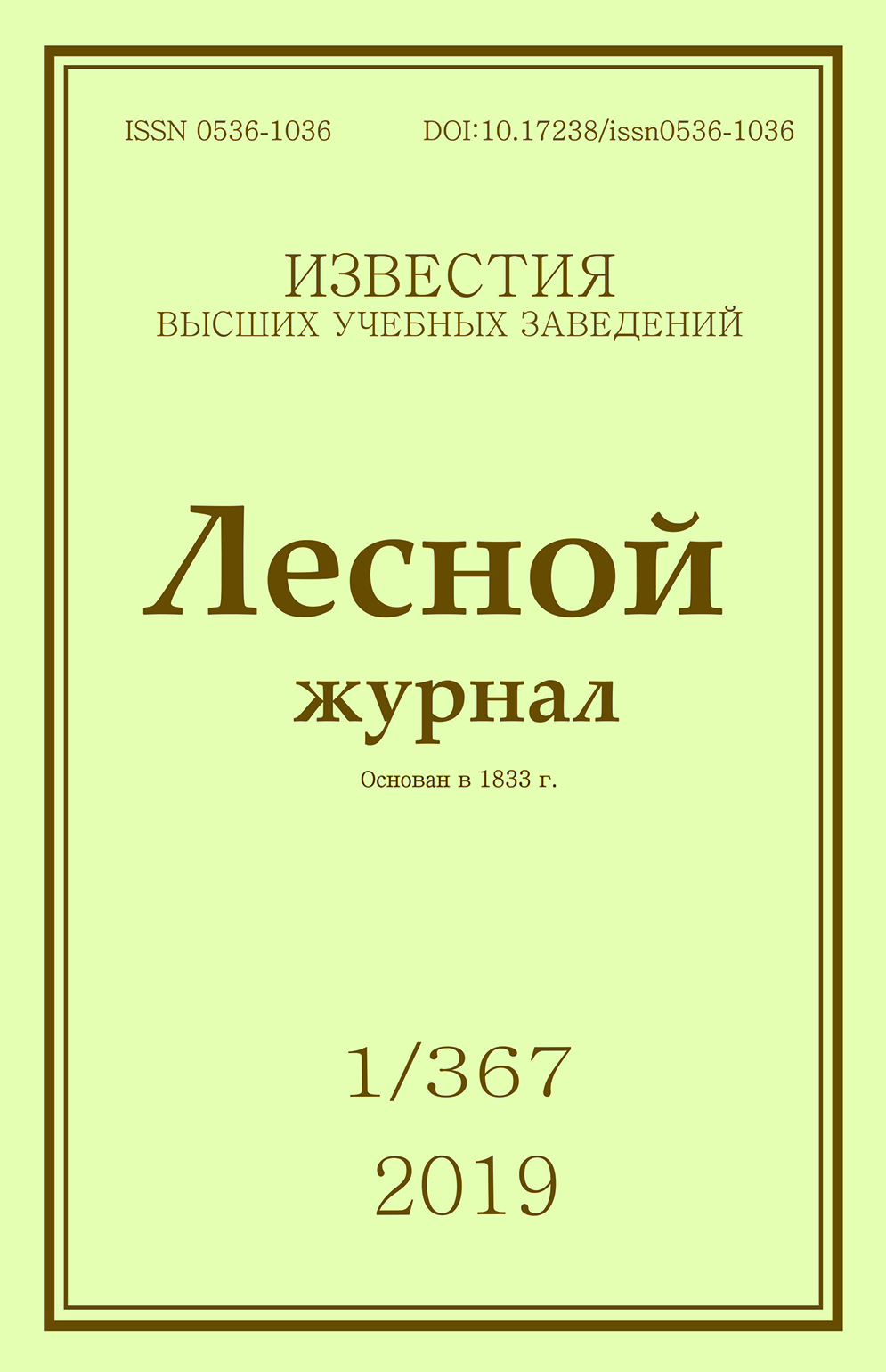Influence of Fires on Pine Forest Floristic Diversity of the Eastern Transbaikal Territory
Keywords:
Transbaikal territory, pine forest, climate, fires, floristic diversityAbstract
The article shows the effect of extensive and repeated forest fires on the floristic diversity
of pine forests typical for the forest-steppe zone of the Eastern Transbaikal territory. Pine forest general description carried out according to the materials of the forest valuation of 1994, before the extensive fires. The floristic composition of long-term non-burning plant communities in different stages of secondary succession after fires was determined by the method of sample plots. Indexes of species abundance accumulation and rare species, and the share of forest and adventive plant species were used to estimate the biodiversity of plant communities. Pine forestland is formed by a variety of forest types, where rhododendron pine forests dominate by area; while cereal mixed herbs pine forests occupy the smaller
area. Sedgy, mountain-lapideous, ledum and riverine pine forests occupy up to 5 % of the total area. Area ratio of monodominant and oligodominant forests to a certain extent associated with slope direction. Monodominant forests areas are larger than oligodominant forests
areas on the slopes of the North-West and the South-West exposure; while oligodominant forests occupy large areas on southern, northern, western and eastern slopes. Young and middle-growth plantations were more than 50 % of the forestland before the extensive forest fires. There were about 40 % of ripening forest stands and up to 10 % of mature and over mature forest stands of the total forested area. The age ratio of plantation has changed a little after fires, however, old-growth plantations over 110–130 years old has failed. The number of plant species in the long-term non-burning forest areas is significantly higher than in burnt areas, logged lands and pine crops. The index of species abundance accumulation is higher in logged lands and plantations without burnings. The index of rare species have decreased from 1.25 (long-term non-burning plantations) to 0.25 after fires. The share of adventive plant species as well as plants native to steppe communities had increased in burnt areas. As a research result, it was established that forest fires led to a significant decrease in forest cover, area of long-term non-burning forests, unique plantations of woody plants, species diversity, indexes of species abundance accumulation and rare species, the share of plant communities in forest species and colonization of plant communities in burnt areas by alien species. The results of the work can be used in assessment of the impact of climate change and fires on biological diversity of forest communities in the region, development of measures for biodiversity conservation, planning of forest thinning and reforestation, etc.
Downloads
References
Бурова Н.В., Торбик Д.Н., Феклистов П.А. Изменение флористического разнообразия после выборочных рубок в ельниках черничных // Вестн. МГУЛ – Лесн. вестн. 2010. № 5. С. 49–52.
Буряк Л.В., Кукавская Е.А., Каленская О.П., Малых О.Ф., Бакшеева Е.О. Последствия лесных пожаров в южных и центральных районах Забайкальского края // Сиб. лесн. журн. 2016. № 6. С. 94–102.
Евдокименко М.Д. Пирогенные нарушения лесорастительной среды в сосняках Забайкалья и их лесоводственные последствия // Лесоведение. 2014. № 1. С. 3–12.
Малышев Л.И., Пешкова Г.А. Особенности и генезис флоры Сибири (Предбайкалье и Забайкалье). Новосибирск: Наука, 1984. 265 с.
Мартынова М.В., Султанова Р.Р., Сазгутдинова Р.Р. Влияние рубок на состояние нижних ярусов растительности в липовых лесах // Современное состояние, традиции и инновационные технологии в развитии АПК: материалы междунар. науч.-практ. конф., Уфа, 14–17 марта 2017 г. Ч. 1. Уфа: Башкир. ГАУ, 2017. С. 65–69.
Новосельцева И.Ф. Леса Читинской области // Леса СССР: в 5 т. Т. 4. Леса Урала, Сибири и Дальнего Востока. М.: Наука, 1969. С. 438–468.
Обязов В.А. Изменения современного климата и оценка их последствий для природных и природно-антропогенных систем Забайкалья: автореф. дис. … д-ра геогр. наук. Казань, 2014. 38 с.
Панарин И.И. Леса Читинского Забайкалья. Новосибирск: Наука, 1977. 232 с.
Предбайкалье и Забайкалье. М.: Наука, 1965. 492 с.
Сергиенко В.Г., Иванов А.М., Власов Р.В., Антонов О.И. Древесный опад и биоразнообразие на участках выборочных рубок Ленинградской области // Тр. СПбНИИЛХ. 2015. № 3. С. 4–19.
Bouchard M., Pothier D. Long-Term Influence of Fire and Harvesting on Boreal Forest Age Structure and Forest Composition in Eastern Québec // Forest Ecology and Management. 2011. Vol. 261, iss. 4. Pp. 811–820. DOI: 10.1016/j.foreco.2010.11.020
Hansen A.J., Spies T.A., Swanson F.J., Ohmann J.L. Conserving Biodiversity in Managed Forests: Lessons from Natural Forests // BioScience. 1991. Vol. 41, iss. 6. Pp. 382–392. DOI: 10.2307/1311745
Lavoie L., Sirois L. Vegetation Changes Caused by Recent Fires in the Northern Boreal Forest of Eastern Canada // Journal of Vegetation Science. 1998. Vol. 9, no. 4. Pp. 483–492. DOI: 10.2307/3237263
Schaich H., Milad M. Forest Biodiversity in a Changing Climate: Which Logic for Conservation Strategies? // Biodiversity and Conservation. 2013. Vol. 22, iss. 5. Pp. 1107–1114. DOI: 10.1007/s10531-013-0491-7
Venier L.A., Thompson I.D., Fleming R., Malcolm J., Aubin I., Trofymow J.A., Langor D., Sturrock R., Patry C., Outerbridge R.O., Holmes S.B., Haeussler S, De Grandpré L., Chen H.Y.H., Bayne E., Arsenault A., Brandt J.P. Effects of Natural Resource Development on the Terrestrial Biodiversity of Canadian Boreal Forests // Environmental Reviews. 2014. Vol. 22(4). Pp. 457–490. DOI: 10.1139/er-2013-0075







